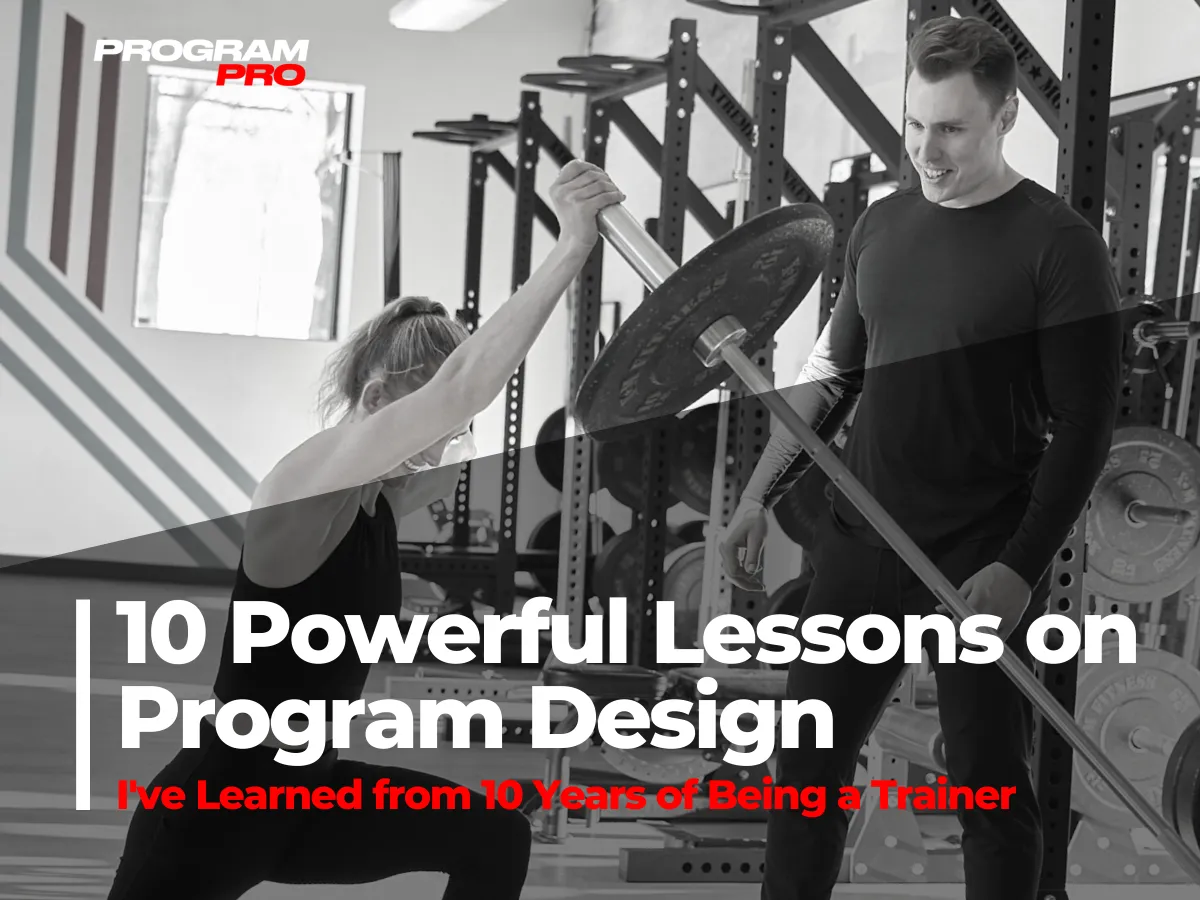
Program Pro Blog

10 Powerful Lessons on Program Design
I've been a fulltime trainer for over 12 years now.
During that time, there's been a lot of trial and error.
Especially when it comes to programming.
Here are 10 lessons on program design I've learned along the way.
1. As a trainer, your job is to alleviate confusion, not add to it. Your clients don't hire you to show off how smart you are. Your clients hire you to take the guessing out of their workouts. They don't want to spend their time scrolling through overly complex spreadsheets or watching 30 minutes of tutorial videos. Keep it simple and coach the hell out of the program.
2. Block periodization is pointless for most people. The more you lean into one direction of training, you further you deviate away from other qualities (i.e. you rob Peter to pay Paul). If you train general population, most of your clients probably want to look, move, and feel better. Design programs that train multiple qualities concurrently, instead of compartmentalizing your focus.
3. Full body workouts are criminally underrated. They're time-efficient and offer more bang for your buck. Split body routines have their time and place, but for the vast majority of people...full body workouts are the way to go.
4. Most people should train their upper back 3-4 x per week. The small, often neglected muscles of the upper back are usually undertrained and recover faster between sessions. Band pull aparts and face pulls are just a couple examples of low-impact, high-return exercises your clients should be doing more frequently.
5. The goal is to keep the goal the goal. Shoutout Dan John.
6. Do the most IMPORTANT and COMPLEX exercises at the BEGINNING of the workout. Save the LEAST important and complex exercises for the END of the workout. Follow this golden rule and you'll be amazed at the results. You'll have to decide what's important based on your client's goals. A simple "hack" is to include priority exercises in your programs.
7. Pick a system and stick to it. There are a metric fuck ton of programming apps and tools you have at your disposal as a trainer. And guess what? They all work. Don't waste time overthinking the perfect program template or progress tracking system. Just pick one and go with it. You can always change it later.
8. Involve your client in their program design. Include exercises they love doing, celebrate the small wins along the way, and always review their program together. You'll build trust and buy-in to your training process.
9. Programming is a muscle/skill. When you don't train it, it atrophies. How often should you sit down to write programs? It's up to you. Personally, I "batch" my programming and write 3-4 at a time. It helps me get in the zone. I'll do this at least twice a week.
10. Save your programs for future templates. Never start with a blank spreadsheet. Write the best possible program you can for your client, then save it as a template you can use for other clients with similar goals and capabilities. A program is a recipe. You don't need to reinvent the wheel every time you write a new program. Actually, you shouldn't. The more you deviate away from what's ALREADY WORKED, the more you run the risk of designing an ineffective program. I'm pretty sure I got that from Mike Boyle.
Use Templates to Design Better Programs in Less Time
Programming is an essential skill for trainers. Without it you won't get results, referrals, or a reputation as the go-to trainer. Which is why I built the Program Pro Certification.
When it comes to programming - success leaves clues.
And templates allow you to build off of past successes.
Learn how to design better training programs in less time with my FREE 12-Week Plug and Play Program Template. Just enter your name and email for instant access.


